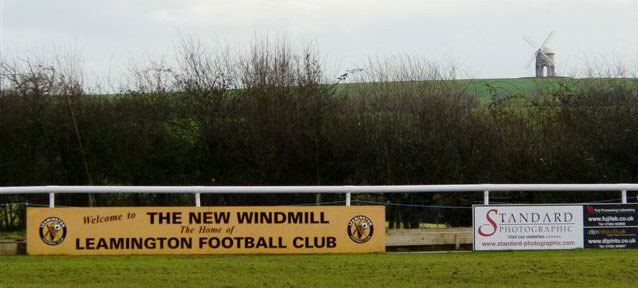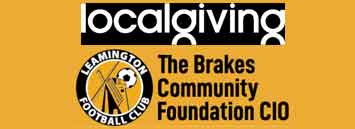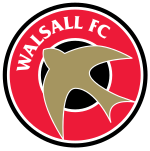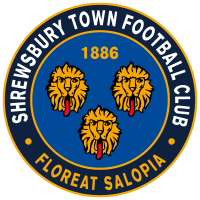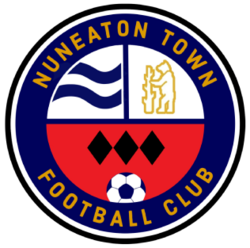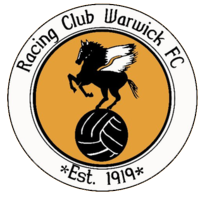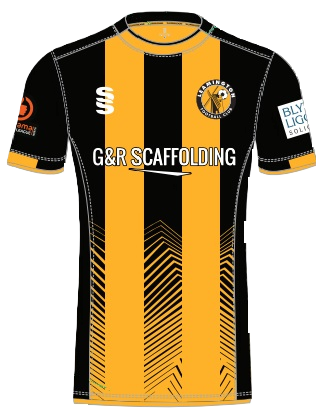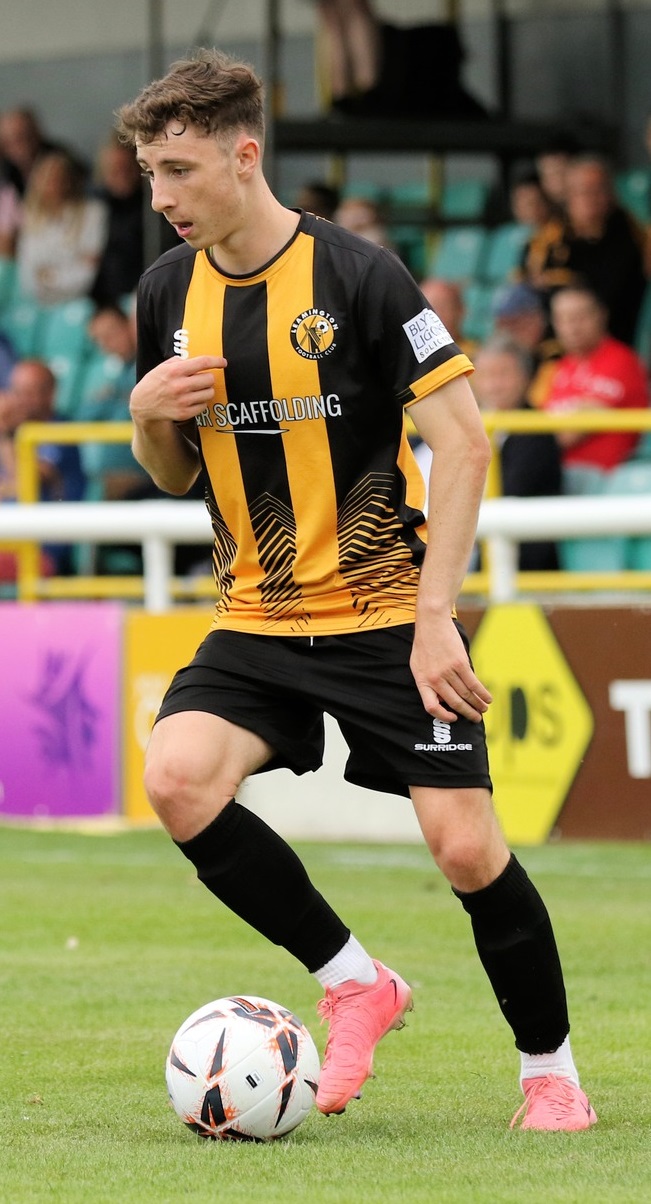Although Leamington FC did not play a competitive match between April 1988 and August 2000, the club was kept alive in name only by a determined band of supporters, who continued to pay the registration fee to Birmingham County FA in the hope that someday it would rise again.
Leamington Football Club Limited had been formed in 1983 after the news of the ground sale broke. The link with AP (Automotive Products) had ended on July 1st 1985, once the club had left The Windmill Ground they raised the sum of £20,000 to attempt to live on at another site. This was raised by 147 supporters buying shares, and the sale of fixtures and fittings from the Windmill Ground.
Even before the departure from the Windmill Ground moves were being made to try and secure a new site. Sixteen were looked at and all were rejected for one reason or another before local farmer Bob Wright agreed to sell six acres of land along the Harbury Lane close to the Fosse Way for £30,000. The site was finally purchased in October 1991, and behind the scenes money continued to be raised to make the dream a reality. Everything you see at the ground today has been achieved thanks to the blood, sweat and tears of a number of committed supporters, and officials, some of whom had followed the club before, and some who came on board as the club surfed the wave of optimism surrounding it as it kicked off the new era.
The first match to be played on the ground took place on September 13th 1998 between Leamington Juniors Under 12’s and St Peter’s Celtic.
December 1999 saw a formal application made to re-join the Midland Combination, and on August 19th 2000 the first competitive fixture was played at the ground as Brakes kicked off a new era in Division 2 of the Midland Combination, which due to reorganisation of the Pyramid was now three levels below where they had dropped out back in 1988. The opposition were Enville Athletic and Leamington won 3-1 in front of an estimated crowd of 730, 18 year old Josh Blake scoring their first goal.
By now the stadium had been named The New Windmill Ground, keeping its links with the past while the site was overlooked by the nearby Chesterton Windmill. The facilities in the first season were basic but adequate for the level we re-entered the pyramid at. The pitch was surrounded by a white railing and there was hard standing on all four sides. The Harbury Lane End cover consisted of only one section early in the first season, but was completed by the end of the 2000/2001 campaign. The only other structures in place at the ground during the first season were the dressing rooms, obtained from local builders AC Lloyd (The company who built on the old stadium), while a room for the officials was built in between. There was also a small shed situated where the club shop is today, named the radio shack as it housed the PA system. This was powered by a petrol generator, while toilets were hired and had to be emptied each week. Another local builder, Tony Atkins, donated a cabin which was used as a separate room to entertain visiting officials and others. These temporary buildings were situated in the Southwest corner of the ground where you enter through the turnstiles now.
By the beginning of the second season at the ground, 2001/2002, an open seated stand had been acquired by the Friends of Leamington FC, our first supporters club, from Stratford College. This was tidied up and made ready for use with the addition of seats purchased from Oxford United’s old Manor Ground, along with a PA system and turnstiles. This stand was initially placed on the halfway line on the Sheepside but has since been moved to the other side of the ground before settling in its current location a few yards from where it was originally placed. Another small shed was introduced, used as a sweet shop for our younger supporters.
The summer of 2002 marked an important milestone in the life of our stadium as the floodlights which the club had purchased from Halesowen Town were switched on for the first time by lifelong Brakes fan Nigel Murray in a friendly match against the Yeltz watched by 433 people. It had been a long drawn out process to bring electricity to the New Windmill Ground, and was a significant step in the development of the site, one that enabled the club to continue its upward momentum. Four rows of the blue seats from Oxford were installed in the Harbury Lane End to meet Midland Combination seating requirements. The PA was also moved into the corner of this location. It also was during the 2002/03 season that the first stage of the clubhouse was built, down in the Southeast corner of the ground.
The clubhouse development continued over the following two seasons with fans mucking in to help out where possible. The building was officially opened on July 20th 2005 by John Dibble, the Chairman and Managing Director of Building and Plumbing Supplies, who have been the club’s shirt sponsors since 2002. New dressing rooms, a boardroom plus officials changing rooms and a physio room meant that the temporary buildings had served their purpose, and these were removed and a fenced off patio area created in their place, giving supporters an outdoor place to congregate and have a drink before the match. During its lifetime the area was also used to house a bottle bar during big games, and barbecues at the end of season presentation evenings.
The club was also fortunate to be able to have an electronic scoreboard installed in the northeast corner of the North Bank end, thanks to Linleigh Electrical.
The momentous FA Cup run of 2005/06 enabled the club to erect a new covered 100 seat stand on the half way line on the Sheepside of the ground as preparations to bring the New Windmill Ground up to standard for a higher level of football continued.
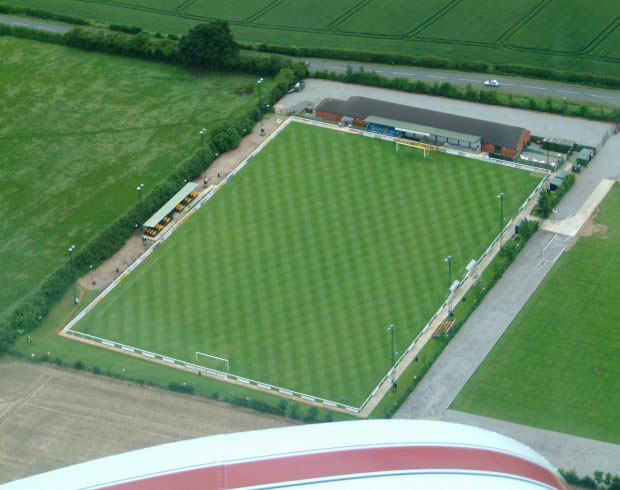
Towards the end of 2007 the North Bank grass was replaced by 4 steps of terracing along its length. This was used for the first time on Boxing Day of that year in a match against Romulus.
The Harbury Lane End was fully converted to terracing by July 2008, the seats being removed and seven steps installed. Crush barriers were also subsequently installed at both ends.
A small building was erected in the southeast corner of the ground to the left of the players tunnel to accommodate match sponsors, but the biggest developments to happen at Harbury Lane for some time came after our promotion to the Conference North in 2013. To enable the club to meet all Step 2 National League System ground grading requirements, the 100 seat stand was carefully moved across the pitch to the other side of the ground and joined to a new seated stand containing a further 170 seats. A new covered terracing area was also erected alongside this, up in the northwest corner. The open seated stand, was moved back to the Sheepside to its current position, and the concrete walkway on that side of the ground was widened. The dugouts were also moved to this side of the ground and replaced with new, larger ones. A new toilet block installed along the same side as the new main stand, along with the need for further turnstiles at the North Bank end of the ground for segregated matches meant that the programme shop was moved to a new home, next to the main stand in the hut that was previously used for Berties refreshments hut. A new larger refreshment unit and first aid room was installed in the southwest corner, sadly meaning the end of a large part of the patio area, as another new building for hospitality and an office, was installed just behind it, the other side of the entrance to the clubhouse.
Chris White, MP for Leamington & Warwick, unveiled the improvements ahead of the club’s victory against Gainsborough Trinity FC on February 14th 2014. The project was made possible thanks to two separate grants totalling £49,722 from the Football Stadia Improvement Fund (FSIF), the largest funder of non-league football in the country.
In August 2015 the club agreed a long term partnership with energy manufacturing company Phillips 66, who became our Community Grass Roots and Stadium Partner. The stadium is now known as the Phillips 66 Community Stadium.
With thanks to Terry Willoughby, Keith Hancock, David Hucker and Mark Chadderton for information used.

